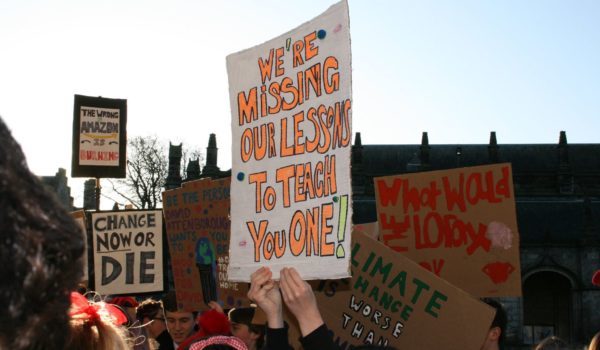The past few months completely shook the unsuspecting year of 2020, and as countries across the globe went into lockdown it seemed as if the world had gone quiet. It was in the midst of this silence that the Black Lives Matter movement erupted following the murder – it was murder – of George Floyd on the 25th May. His death highlighted long-standing police brutality against black communities as well as systemic racism in the US. But the movement didn’t stop there. What was a national movement soon became international, with BLM calling on other countries, including the UK, to look introspectively. The UK is by no means innocent. A world that had been quiet for so long spoke out in one voice. People around the world listened and joined in through protests, petitions, self-education and social media platforms.
During a protest in Bristol, a statue of Edward Colston, a slave trader from the 17th Century, was removed from its plinth and thrown into the harbour. This sparked a debate in Britain on whether it was right to remove a statue from its place, with some arguing that this was an attack on history. The debate proved even more divisive when it was rumoured protestors had plans to remove further statues across the UK.
In response, the government and members of the public have taken to guarding statues they deem worthy of protection. Notably, the statue of Winston Churchill has quite literally been boxed up to avoid potential vandalism from protestors, which Boris Johnson, the leader and figurehead of this country, has called “absurd and shameful”[1]. The PM urged the public to remember that though Churchill had opinions that were “unacceptable to us today”, he fought for Britain against “fascist and racist tyranny”[2].
Churchill fought against oppressive regimes in Europe and believed in freedom of the individual. Well, so long as that person was white and male that is. The reasons for which Churchill was commemorated only highlight his hypocrisy. To him, equality had a racist and misogynistic small print. However, I won’t dwell on this any longer, since my resentment of this so-called hero runs fairly deep.
The main issue I have with the PM’s statement is his claim that “we cannot try to edit or censor our past” [3]. He believes that the removal of the nation’s statues would somehow create an Orwellian dystopia in which the past is considered malleable, a palimpsest.
He is wrong. A statue is not a history book. It is not a vital historical document. The removal of a statue from a public space does not erase history; to claim this is to fail to recognise the function of a statue. The public depiction of an individual is meant as a celebration of that person. A statue is not so much history in itself but rather a celebration of it. And so, for a country to display a statue is by default to grant it moral validity and praise. I urge you to ask yourselves this – do want to celebrate a slave trader? A racist? A white supremacist? No? Well then don’t keep their statue up in tribute to them!
David Olusoga, a professor of Public History at the University of Manchester, said “The toppling of Edward Colston’s statue is not an attack on history. It is history.”[4] Wanting to remove a statue is not an attempt to erase history, it is an attempt to stop celebrating it. It is a step in the right direction, a step closer to an actively anti-racist society. It truly would make history.
I titled this piece ‘petrified’, as in to change something into stone. After all, what is a statue if not a person transformed into stone? Statues give past figures an immortal presence in our society, and if we are not careful, we will become frozen in the past, static and incapable of change. We will become petrified.

Centuries worth of cobwebs have been dusted off the issue of racism and white supremacy in art in the past month. As a result, I’m left reflecting on a work by Kara Walker I’d seen in the Tate Modern back in January titled Fons Americanus (2019). When I first saw it, I was reminded of the Trevi Fountain in Rome, and had I not examined it in more detail this would have likely been my only passing thought.
The piece depicts the Transatlantic Slave Trade, a vital topic in Modern British History that is crucial to understanding the world we live in today. It struck me that the medium of the piece is familiar, a grand marble sculpture clearly intended as celebratory, echoing those built in the time of the Roman Empire. Yet, the subject matter is comparatively unfamiliar. Slavery is taboo in the UK, a stain on the history of a ‘great nation’ best left in the dark. It’s rather convenient that the aspects of British History that are unimaginably horrific and inhumane don’t make it into stone, they aren’t given the same acknowledgement or permanence.
This absence demonstrates that statues are not history lessons, they are a one-sided narrative of the oppressor. It is white supremacy set in stone. It is no coincidence that the subjects of statues are overwhelmingly white. If anything, the statues stand in the way of accurate historical narrative, as by painting figures such as Churchill as irrefutable heroes, we limit the conversation. By clinging to a constructed past, we limit the opportunity to address racism. Boris Johnson was right to state that we should not fictionalise history – so let’s stop doing just that.
We cannot move forward unless we start acknowledging our country’s past. We cannot gloss over the horrors which have the led to the very real and alive systemic racism in Britain. Racism is a pandemic and it is high time we acknowledge it, and more importantly do something about it. The history of racism is our history. Let’s start that conversation.









Comments